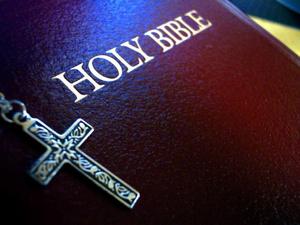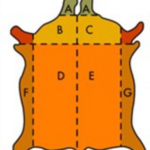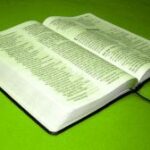Tucked in the corner of my room is a small brown box. It snaps shut, no lock. Inside the box are three Bibles that I have used until the soft pages have become tattered and the binding of the best, leather-bound is falling apart. I don’t intend to ever throw these Bibles away. One day, they will become gifts of spiritual posterity to my family.
By the same token, many of them were gifts to me. Bibles are not only thoughtful sentimental gifts, but Bibles are sacred texts which lead readers along their spiritual journey. The type of Bible you purchase will depend on several factors including: translation, study helps, binding, price and personal preference.
The variety of Bibles available can making purchasing a Bible a daunting task, below are some tips to make buying a Bible easier.
Translation is probably the biggest consideration when buying a Bible. Find out if the recipient has a preference. If it is for yourself, determine your preference. Many believers swear by the King James Bible. The fact that original texts were written in Hebrew, Greek, and Chaldean will not sway hard core King James Bible devotees. A closes version to King James that makes the Bible more readable is the New King James. The New King James Bible eliminates some archaic language found in the King James Version.
Many Bible scholars agree that the best translations today are the New American Standard (NAS) and the New International Version (NIV). Both translations were developed by teams of scholars who revisited original texts and translated them into terms that correlate with modern English. The New Living Bible, differing from its predecessor, is also a translation considered faithful to the original text. No translation is perfect, but unless you decide to master Greek, Hebrew, and Chaldean you will have to decide on the version with which you are most comfortable.
The Living Bible, prior to the new translation, was a paraphrase. There are many popular paraphrased Bible’s including The Living Bible and The Message. A paraphrase makes a good study tool, and a great second Bible to assist in reading. A paraphrase is not a faithful translation of original texts; it is the author’s interpretation of the general meaning of a passage or phrase.
If you are not sure, purchase your Bible from a book store with a knowledgeable staff. They will be able to assist you in determining if the version you are considering is a translation or a paraphrase.
Once you have determined which translation to purchase, the next consideration is study helps. Bibles vary in the amount and types of study helps offered. Some, such as Scoffield and Max Lucado, offer study notes. Notes assist in interpretation of difficult scripture. Notes are included in addition to Scripture, not in place of scripture. Beginning Bible learners find these Bibles particularly helpful.
Study Bibles also offer background information on text, historical and geographical information, and information about the author of each book. These resources help readers better understand and interpret the Scripture.
Additional study helps include maps, concordances, tabbed book indexes, and subject indexes. Concordances vary in size and scope. The concordance offers the occurrence of prominent words and verses where they are found in the Bible. An exhaustive concordance is not available in any Bible and will have to be purchased separately. A subject index is useful for finding Scripture related to a specific topic. For example, searching for Bible verses about “love” that may not directly include the word “love” require the use of a subject index.
Further helps include lists of parables, prophecies, timelines, and other informational resources. Determine which resources are essential and which are bonuses.
The NIV Study Bible has been among the top selling Bible’s for several years.
Bibles are also available without study helps. These are the most basic and least expensive Bibles.
Once you have selected the version and type of study Bible you would like to purchase decide on binding. Binding has a huge effect on the price of the Bible. Paperback Bibles are the least expensive. King James Version paperback Bibles may be purchased for as little as $1. Hardback Bibles have become popular in recent years. They are well bound, and stand up well to heavy use. Hardback Bibles are an excellent choice for children, teenagers, and young adults who may not use great care in transporting and storing their Bibles. Bonded leather is the next option, with leather bound Bibles being the most expensive. Expect $10-$20 differences or more based on binding and cover alone.
At this point, the most difficult decisions have been addressed. You should be able to select a Bible based on the above criteria within your price range, or you may find that you need to adjust your price range to accommodate your needs and expectations. A knowledgeable salesperson should be able to help you find what you are looking for within your price range.
The decision is then up to you. Bibles are available in a variety of colors. Classic looks are black, blue, and burgundy. More recently hunter green, pink, and other colors are available in bonded leather. Cloth covered hardbacks are also popular and allow styles to go to all extremes from leopard print, to striped, to cloth and leather combinations, to metal covers.
A Bible is a long term purchase. Remember to buy with preferences and needs in mind. The Bible you purchase has the potential to change a life, and maybe even become a spiritual heirloom.





